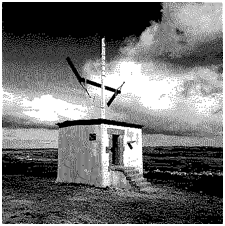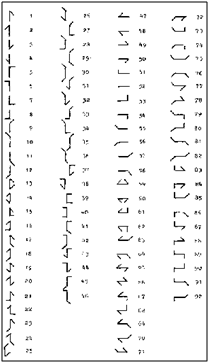Bluetooth® low energy Security

Chappe's Optical Telegraph
"Paris is quiet and the good citizens are content." Upon seizing power in 1799 Napoleon sent this message on Claude Chappe’s optical telegraph. Chappe had invented a means of sending messages line-of-sight . The stations were placed approximately six miles apart and each station had a signaling device made of paddles on the ends of a rotating “regulator” arm whose positions represented code numbers. Each station was also outfitted with two telescopes for viewing the other stations in the link, and clocks were used to synchronize the stations. By 1803 a communications network extended from Paris across the countryside and into Belgium and Italy.
Chappe developed several coding schemes through the next few years. The station operators only knew the codes, not what characters they represented. Not only was Chappe’s telegraph system the first working network with protocols, synchronization of serial transmissions but it also used data encryption. Although cryptography has been around for millenniums—dating back to 2000 B.C. — Chappe, was the first to use it in a wide area network in the modern sense.

Chappe's Telegraph Code
Of course anyone positioned between the telegraph stations that had Chappe's telegraph code in hand could decode the transmission. So securing the code was of paramount importance in Chappe's protocol.
Modern wireless networks such as Bluetooth low energy employ security measures to prevent similar potentially man-in-the-middle attacks that may have malicious intent.
Bluetooth low energy devices connected in a link can pass sensitive data by setting up a secure encrypted link. The process is similar to but not identical to Bluetooth BR/EDR Secure Simple Pairing. One difference is that in Bluetooth low energy the confidential payload includes a Message Identification Code (MIC) that is encrypted with the data. In Bluetooth BR/EDR only the data is encrypted. Also in Bluetooth low energy the secure link is more vulnerable to passive eavesdropping, however because of the short transmission periods this vulnerability is considered a low risk. The similarity to BR/EDR occurs with "shared secret key", a fundamental building block of modern wireless network security.
This paper describes the process of establishing a Bluetooth low energy secure link.